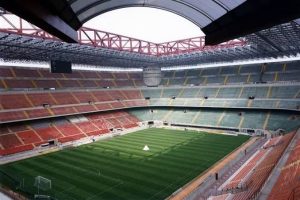
In a historic decision that has sent shockwaves through Italian and global football, Milan City Hall has officially approved the €197 million ($231 million) sale of the San Siro stadium and its surrounding land to AC Milan and Inter Milan. The decision, reached in the early hours of Tuesday after more than 11 hours of heated debate, saw councillors vote narrowly in favor of the proposal, 24–20.
This means that one of world football’s most iconic arenas, officially known as the Stadio Giuseppe Meazza, is set for demolition after nearly a century of hosting unforgettable matches, rivalries, and moments of football history.
A Stadium Steeped in History
Built in 1926, the San Siro has long been considered the beating heart of Italian football. From legendary Serie A derbies between AC Milan and Inter Milan to hosting four Champions League finals and six World Cup matches (including the 1990 opening game), the stadium has cemented its place as a true cathedral of the sport.
With a capacity of 80,000 seats, it remains one of Europe’s largest stadiums and a symbol of football culture. Its demolition will mark the end of an era, both for Milanese football and for the global game.
Why Demolition Was Approved
The decision to demolish the San Siro has been years in the making. Both Milan clubs have been lobbying for modern facilities to match their ambitions, arguing that the outdated infrastructure of the San Siro is no longer sustainable in the modern football economy.
The approved sale gives full ownership to AC Milan and Inter Milan, allowing them to move forward with plans to construct new, state-of-the-art stadiums that can maximize matchday revenue, commercial partnerships, and fan experiences.
The Future of Milan Football
While demolition plans are expected to move ahead in the coming years, both clubs will continue to play at the San Siro in the short term, with construction timelines for new arenas still being finalized.
For supporters, the news brings mixed emotions. While many understand the need for modernization and revenue growth, the emotional attachment to the San Siro—where legends such as Paolo Maldini, Javier Zanetti, Marco van Basten, and Ronaldo (Brazilian) made history—is undeniable.
Football historians fear that the demolition of such venues risks erasing the cultural fabric of the game, while others see it as a necessary evolution for Italian football to remain competitive with Europe’s financial giants.
Conclusion
The San Siro’s fate is now sealed. With ownership transferred to AC Milan and Inter Milan, demolition is only a matter of time. For fans across the world, the coming years will be the last chance to experience the magic of a stadium that has defined footballing generations.
The cathedral of Milanese football may soon
fall, but its legacy will live forever.

